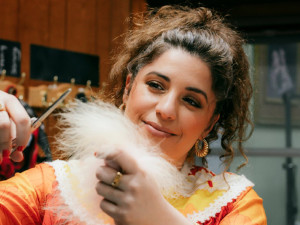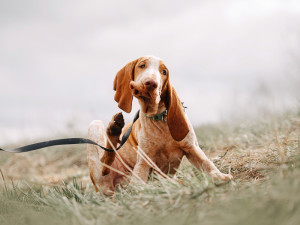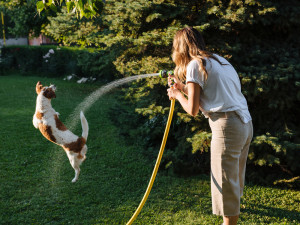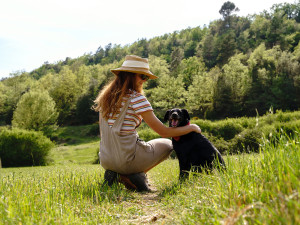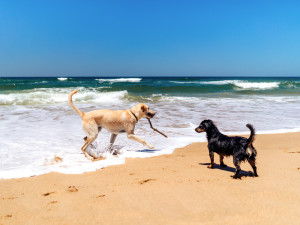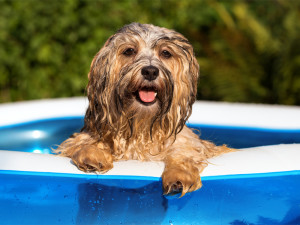How to Keep Your Dog Looking Fresh — Even When Summer Has a Different Goal
Bugs don’t stand a chance against a well-groomed pup.
Summer, especially with global warming, can feel a little less like a paradise for beach days and outdoor dinner parties and more like you’re stuck in the desert with no relief. If you’re hot and itchy, even with access to regular haircuts and bug repellant, imagine how your dog must feel, even with all that shedding.
Maintaining our dogs’ grooming routines is also important. It’s not all about looking good, though that’s certainly one motivator; it’s also about keeping a close eye on the condition of our dogs’ skin, ears, and nails — and solving small problems before they become big ones.
Snap a pic of your pup’s teeth, and GREENIES™ will help you spot potential signs of oral health issues.
What Should I Do About My Dog’s Coat?
While some breeds require the services of a professional groomer, all dogs benefit from a good brushing, and you don’t have to be a pro to do that. A dog’s best friend is a grooming tool appropriate for their coat type, one that strips out loose hair so air can circulate against their skin. Regular and thorough brushing also prevents mats, which are not only painful but also trap heat and moisture and can result in skin infections.
Experts tell us to resist the urge to shave down our dogs, particularly those with double coats, who can be quite comfortable as long as those coats are well cared for. Whatever its length and composition, a dog’s coat provides built-in climate control as well as a first line of defense against sunburn, twigs and stickers, among other things.
How much do you spend on your pet per year?
What About Pests?
This is also the time of year to be particularly vigilant about ticks and fleas. The former can carry disease and the latter can quickly set up housekeeping on your dog — and in your house — if not managed. This is another reason to be conscientious about wielding the brush, rake, or comb of your choice. While your dog may or may not agree, adding an extra bath or two is also a good summer strategy. Brush before and after, choose a shampoo that’s a good match for their skin and coat type (or make your own), lather once and rinse well.
Check for Infections
Check your dog’s ears regularly, particularly if swimming is on their playlist. Dogs whose ears fold over are prone to ear infections, which wet ears promote. Some groomers pluck hair from a dog’s ear canal, but vets advise against this because the hair pores will secrete extra serum, providing another excellent medium for infection. After your dog takes a dip, wipe the inside earflap gently with a cotton ball; if your vet says it’s OK, you can also use drops that contain a drying agent. According to the Dog Owner’s Home Veterinary Handbookopens in new tab, a drop of white vinegar will also help prevent “swimmer’s ear.”
In the “of course” category, continue to brush your dog’s pearly whites and pay attention to their paws. Check between their toes for ticks, foxtails, brambles or other debris, and trim their nails.
None of this is rocket science: just good old-fashioned conscientiousness. And the payoff is so worth it: a dog who feels good and smells good, plus far fewer fur-bunnies rolling across the floor and lurking under the couch.


